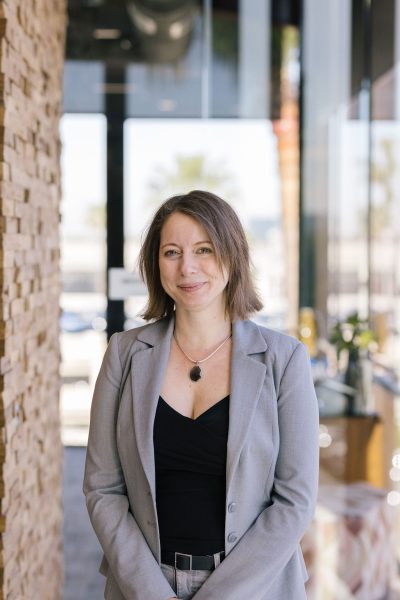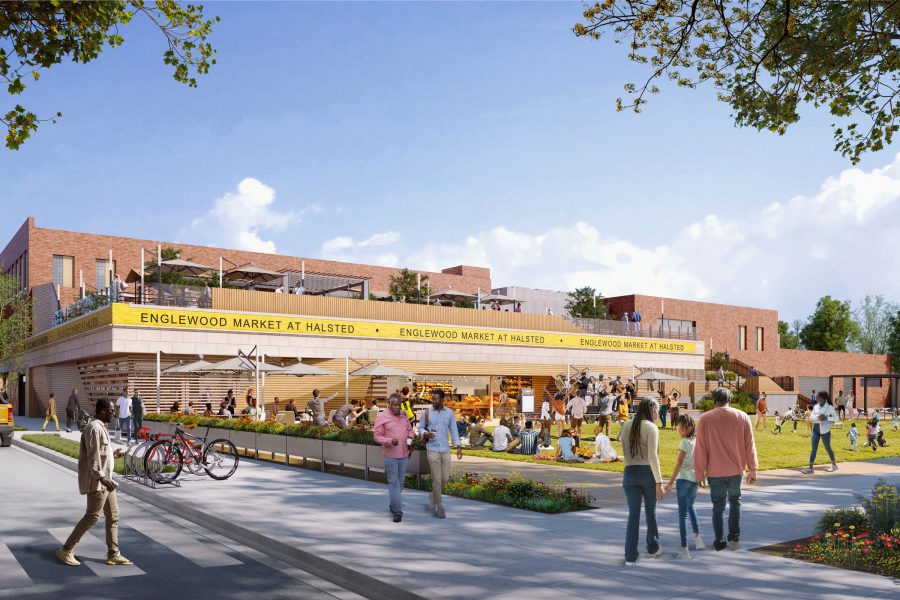Story at a glance:
- Architect Stacey Olson and her team consider sustainability not just through a material lens but an equity lens, considering a project’s impact on all people.
- Things like task lighting and quiet rooms benefit not only neurodivergent people; having more options and control benefits everyone.
Stacey Olson has been in the industry for more than 20 years. The director of sustainability and global wellness leader at Gensler, based in the firm’s LA office, she looks at sustainability not just through a green building and design lens but also an equity lens.
“Disability is the largest minority in the world, and it’s the only minority that literally anyone can join at any time. We will all likely join that minority at some point in our lives,” she says.
This summer she attended a global conference called Disability:IN, which brought together hundreds of corporate leaders to explore how they are building out their spaces and committing to policies to help everyone in their buildings thrive.
How do we design for everyone? A big part of our wellness practice is inclusive design.
“There are a lot of conversations about ‘How do we create environments where everyone has the capacity to earn a paycheck if they want to?’” Olson says. Those conversations include looking at everything from designing for neurodivergence to physical accommodations. And what about other issues like post-traumatic stress? Design teams should consider how anyone and everyone exits a space in an emergency, for example.
“When we think about community resilience and natural catastrophe, how do we design for everyone? A big part of our wellness practice is inclusive design,” Olson says.

Photo courtesy of Stacey Olson
In general she says the firm is committed to what it calls “design for the edges.” When you design for everyone—even those on the edges who may be most affected by a design—everyone benefits, she says. Some simple examples in an office setting are quiet rooms and task lighting, she says.
“When you think about a quiet room, you think about folks who might be neurodivergent or who might be dealing with a medical issue. They can go to that quiet room and rest and recharge. But really everybody in the whole office benefits from a quiet room,” Olson says, adding that it also offers a space for anyone to take a break.
“Task lights are another example where having control over your environment allows you to have an increased sense of autonomy,” she says. “You might not necessarily need that extra light all the time, but it’s super nice to be able to leverage that control over the space. It comes in handy.”
The “20-minute city” planning concept is another concept that focuses on design for everyone, providing many health and wellness benefits from walkability to building community. “Unlike urban sprawl, the 20-minute city concept advocates for dense, mixed-use neighborhoods where essential services and amenities are within a short walk or bike ride. This approach not only reduces car dependence but also fosters a sense of community. Children can benefit from increased opportunities for social interactions as they travel to and from school, parks, and other local destinations,” write Olson and colleague Kathryn Decker on Gensler’s blog.

A nature trail is part a larger plan to create the nation’s first Agro-Eco district and support a vision for Chicago’s Englewood neighborhood to become an economic center for urban agriculture. Rendering courtesy of Gensler
Gensler also writes about how to create more equitable, connected cities using thoughtfully designed transit-oriented developments. Best practices include supporting multiple modes of transit, from mass transit to highly walkable, protected pedestrian paths to safe streets for bicycling.
Gensler has recently been part of a team working on the Englewood Agro-Eco District Land Use Plan in Chicago. The plan is a community-led vision to revitalize disinvested industrial land and infrastructure with new uses involving food production, employment, housing, and recreation, according to a plan on the city’s website. The project centers largely around a new trail and aims to address issues involving racial equity and repair, public health, climate resiliency, and other local needs, according to the city. The team was led by Gensler’s Andre Brumfield.
“We have to plan for inclusive, accessible spaces that people can rely on in times of crisis. When we co-create civic infrastructure that serves everyday needs and can also function as community shelter, we build lasting, local resilience,” Olson says.

